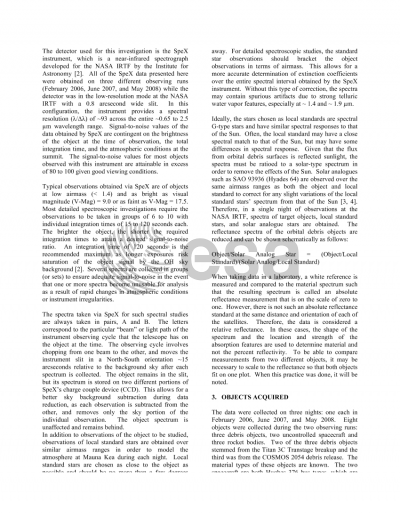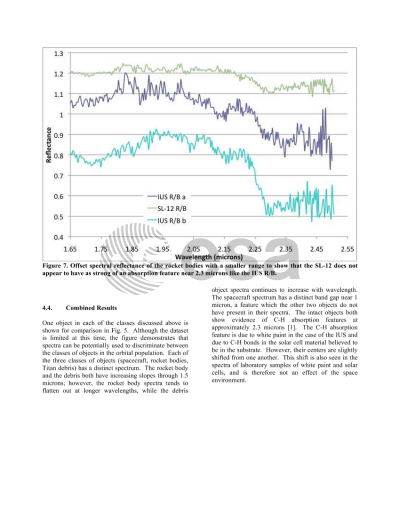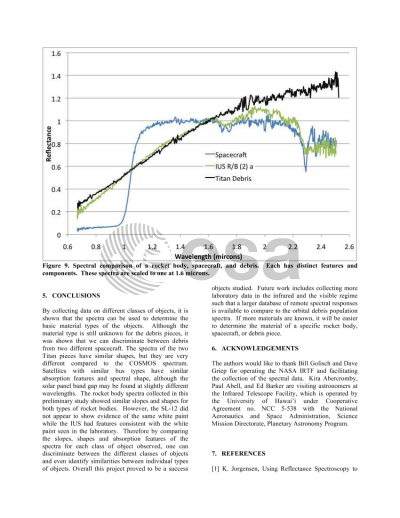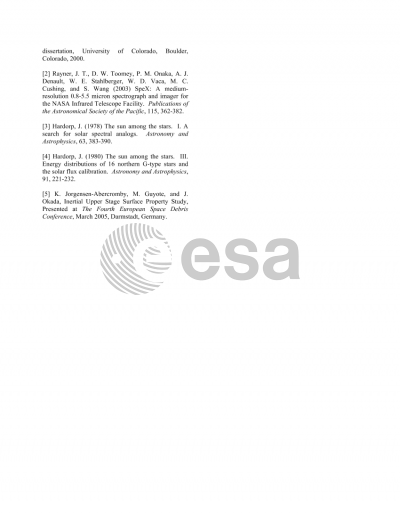Document details

Abstract
A key objective of NASA's Orbital Debris program office at Johnson Space Center (JSC) is to characterize the debris environment by way of assessing the physical properties (type, mass, density, and size) of objects in orbit. Knowledge of the geosynchronous orbit (GEO) debris environment in particular can be used to determine the hazard probability at specific GEO altitudes and aid predictions of the future environment. To calculate an optical size from an intensity measurement of an object in the GEO regime, a 0.175 albedo is assumed currently. However, identification of specific material type or types could improve albedo accuracy and yield a more accurate size estimate for the debris piece. Using spectroscopy, it is possible to determine the surface materials of space objects. The study described herein used the NASA Infrared Telescope Facility (IRTF) to record spectral data in the ~ 0.65 to 2.5 micron regime on eight catalogued space objects. For comparison, all of the objects observed were in GEO or near-GEO. The eight objects consisted of two intact spacecraft, three rocket bodies, and three catalogued debris pieces. Two of the debris pieces stemmed from Titan 3C transtage breakup and the third is from COSMOS 2054. The reflectance spectra of the Titan 3C pieces share similar slopes (increasing with wavelength) and lack any strong absorption features. The COSMOS debris spectrum has a slight slope and has no absorption features. In contrast, the intact spacecraft show classic absorption features due to solar cells with a strong band gap feature near 1 micron. The two spacecraft were spin-stabilized objects and therefore have solar panels surrounding the outer surface. Two of the three rocket bodies are inertial upper stage (IUS) rocket bodies and have similar looking spectra. The slopes flatten out near 1.5 microns with absorption features in the near-infrared that are similar to that of white paint. The third rocket body has a similar flattening of slope but with fewer features of white paint - indicating that the surface paint on the SL-12 may be different than the IUS. This study shows that the surface materials of debris appear different spectrally than intact rocket bodies and spacecraft and therefore are not believed to be solar cell material or pristine white paint. Further investigation is necessary in order to eliminate materials as possible choices for the debris pieces.
Preview









